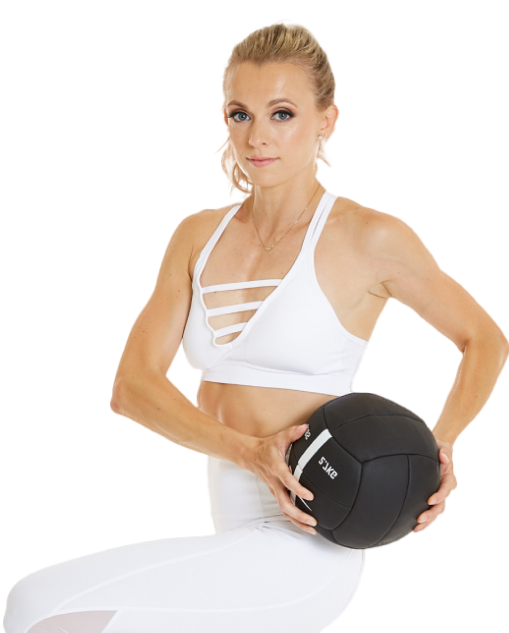Tight toned abdominals look great, but the health benefits of having a strong core outweigh it all.
While 80% of people’s goals tend to be aesthetic, what they don’t understand is “why” having a strong core is important and the benefits that come along with it.
When I refer to your “core” I am talking about both the anterior and posterior chain of your center. Your core muscles enable you to flex, rotate, extend, and compress the abdomen supporting your organs and spine. This includes your rectus abdominis, transversus abdominis, interior and exterior obliques, multifidi, erector spinae, hip flexors, abductors, and glutes. When this support system of the core/lumbo-pelvic region is strong from the inside out it is amazing what it can actually do to your body.
Your core is your powerhouse! It is the foundation of your pillar system. When this is weakened all else compensates, muscular imbalances form and injury occurs. One of the most common issues is lower back pain from faulty alignment. This stems from muscle atrophy, compensation, excessive sitting, and lack of core strength. When the core is STRONG then your posture improves, organs are supported, the dynamic of your exercises change and the strength one acquires over time is amazing to watch!
Now I want to be clear on something – this does not mean complete 100 crunches a day! This means learning how to do abdominal exercises correctly. Start your workouts with basic activation. When your core is activated from the very start the connection is formed. When you come standing you are then able to keep the connection throughout your workouts.
Here are some helpful tips to get you started on developing a strong core:
-
- Begin each workout with abdominal exercises that emphasize drawing your navel toward your spine. This conscious engagement sets the tone for the rest of your training session.
-
- Incorporate stability exercises into your routine. Incorporate tools like stability balls, Bosu balls, or perform exercises on one leg to engage those often-neglected core muscles. Experience improved balance, enhanced posture, and increased overall body control by inadvertently activating your deep intrinsic muscles around the core.
-
- Start small and gradually increase your core exercise routine. Dedicate 5-10 minutes of your morning routine, three days a week, to targeted core exercises. Consistency is key, and even a short duration can yield significant benefits over time.
Remember, a strong core is not just about aesthetics; it is a vital component of overall health and fitness. By prioritizing core training, you will improve your functional movement, reduce the risk of injuries, and enhance your physical performance. So, make the commitment to strengthen your core, and enjoy the transformative effects it will have on your body and well-being.



